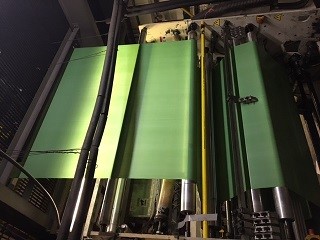The average American is probably unaware that recycling in a blue bin doesn’t always guarantee that those items will actually be recycled. And how would they know? It’s not a common conversation topic, and who would think twice about where their empty pizza boxes go after they get deposited into a recycling bin?
But the truth of the matter is that recycling systems aren’t perfect, and a significant proportion of items delivered to recycling plants end up in a regular landfill.
At CLYNK, we take pride in our efficient multi-stream recycling technology because CLYNKed beverage containers are recycled into new materials far more often than items processed through traditional single-stream recycling methods.
So what makes CLYNK a more responsible method for recycling beverage containers? To answer this question, we need to examine the differences between single-stream recycling, and multi-stream recycling.
What is single-stream recycling?
Single-stream recycling systems (sometimes called commingled recycling systems) allow users to mix virtually all of their recyclables in one bin, without the need for separating materials. Paper, plastic, glass, metal, and cardboard are all sorted at the processing plants, saving residents the trouble of having to categorize their items. Ease of use helps to increase participation rates among users of single-stream recycling communities.
In other words, single-stream recycling systems encourage residents to recycle more, because there’s very little work involved on the residents’ end.
What is multi-stream recycling?
Multi-stream recycling systems (sometimes called dual-stream or source separated systems) separates the paper and cardboard from plastic containers, glass bottles, and cans. Multi-stream recycling reduces the level of contamination (the improper mixture of materials) in the end product, resulting in cleaner, purer materials.
In other words, materials produced through multi-stream recycling methods are less likely to contain foreign components (such as bits of glass in cardboard, or plastic pieces in metal).
So what’s the difference?
While single-stream recycling generally yields higher participation rates, multi-stream recycling creates a cleaner, higher-quality end product that is more likely to be reused. Contamination in recovered materials often renders those materials unusable, in which case, they are simply sent to a landfill. Since multi-stream recycling cuts down on contamination, items recycled in this way have a higher probability of being actually recycled.
Because CLYNK utilizes sophisticated, patented multi-stream recycling technology, our recovered materials are far more valuable to to the beverage manufacturers who are using recycled content in their containers. When you CLYNK plastic/glass bottles, and aluminum cans, you can feel great about being part of a larger community that is putting the health of our environment first.

